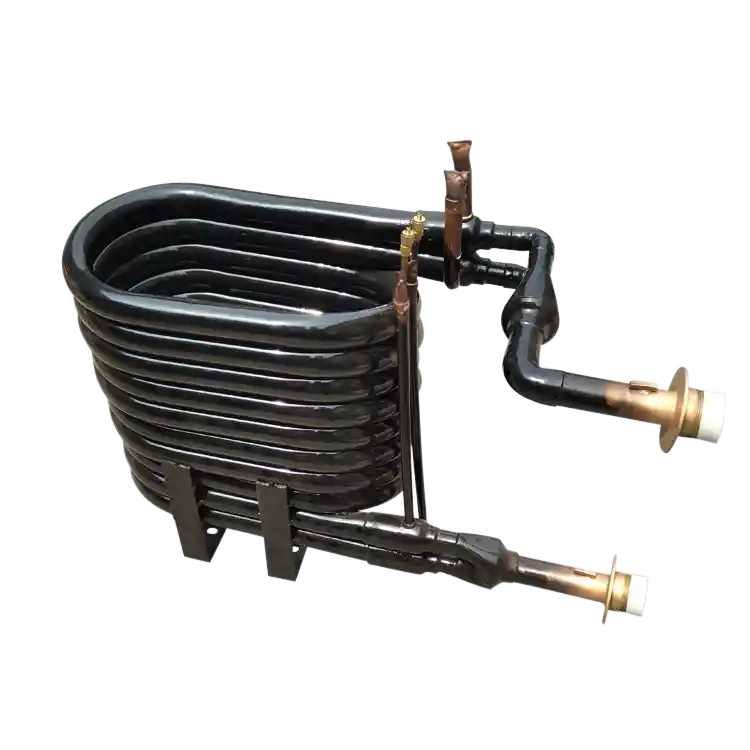Introduction
The outer tube material selection is a crucial aspect of the production process for coaxial heat exchangers. The outer tube not only provides structural integrity but also contributes to the overall performance and durability of the heat exchanger. This article aims to provide an in-depth analysis of various outer tube materials commonly used in coaxial heat exchangers, highlighting their properties, advantages, and disadvantages. By understanding the characteristics of different materials, manufacturers can make informed decisions to optimize the efficiency and reliability of their coaxial heat exchangers.
1. Titanium Outer Tube
Titanium is a highly sought-after material known for its exceptional corrosion resistance, strength, and lightweight nature. These qualities make it an excellent choice for the outer tube in coaxial heat exchangers. Here are the key features of using a titanium outer tube:
| Properties | Advantages | Disadvantages |
|---|---|---|
| Corrosion Resistance | Resistant to various corrosive environments | High cost compared to other materials |
| Strength | High tensile strength | Requires specialized welding techniques |
| Lightweight | Excellent strength-to-weight ratio | Limited availability in certain regions |
| Biocompatibility | Suitable for medical and pharmaceutical sectors | Relatively low thermal conductivity |
2. Stainless Steel Outer Tube
Stainless steel is a popular choice for the outer tube in coaxial heat exchangers due to its corrosion resistance, affordability, and availability in various grades. Here are the key features of using a stainless steel outer tube:
| Properties | Advantages | Disadvantages |
|---|---|---|
| Corrosion Resistance | Resistant to many corrosive substances | Susceptible to chloride-induced corrosion |
| Thermal Conductivity | Moderate thermal conductivity | Relatively heavy compared to other materials |
| Cost-effective | Relatively low cost | May require surface treatment for specific uses |
| Availability | Widely available in different grades and sizes |
3. Copper Outer Tube
Copper, with its excellent thermal conductivity, is often chosen for the outer tube in coaxial heat exchangers. However, it may have limitations due to its corrosion susceptibility. Here are the key features of using a copper outer tube:
| Properties | Advantages | Disadvantages |
|---|---|---|
| Thermal Conductivity | Excellent heat transfer capabilities | Prone to corrosion in certain conditions |
| Compatibility | Suitable for both water and refrigerant circuits | Relatively high cost compared to other materials |
| Malleability | Easy to shape and form | Requires anti-corrosion treatments in some cases |
4. Comparison and Considerations
To aid in the decision-making process, the following table provides a comparison of the different outer tube materials commonly used in coaxial heat exchangers:
| Material | Corrosion Resistance | Thermal Conductivity | Strength | Weight | Cost | Availability |
|---|---|---|---|---|---|---|
| Titanio | Excellent | Relatively low | High | Lightweight | High | Limited |
| Acero inoxidable | Good | Moderate | Moderate | Heavy | Moderate | Wide |
| Cobre | Moderate | Excellent | Moderate | Moderate | High | Moderate |
When selecting the outer tube material, manufacturers should consider factors such as the operating environment, cost constraints, availability, and desired performance. Additionally, specific surface treatments or coatings may be required to enhance the material’s corrosion resistance or optimize thermal transfer characteristics.
Conclusion
The selection of the outer tube material significantly impacts the performance, reliability, and cost-effectiveness of coaxial heat exchangers. Titanium offers excellent corrosion resistance, high strength, and lightweight properties but comes at a higher cost. Stainless steel provides a good balance between corrosion resistance, thermal conductivity, and cost. Copper, with its exceptional thermal conductivity, is a viable option but requires careful consideration of corrosion protection measures.
By understanding the properties and trade-offs of different outer tube materials, manufacturers can make informed decisions to optimize their coaxial heat exchangers for specific applications. Balancing the material characteristics with the requirements of the heat exchanger ensures efficient heat transfer, durability, and long-term performance.


